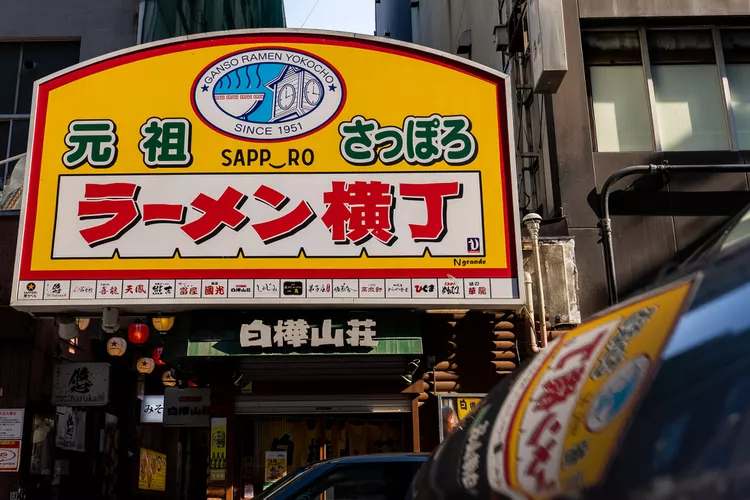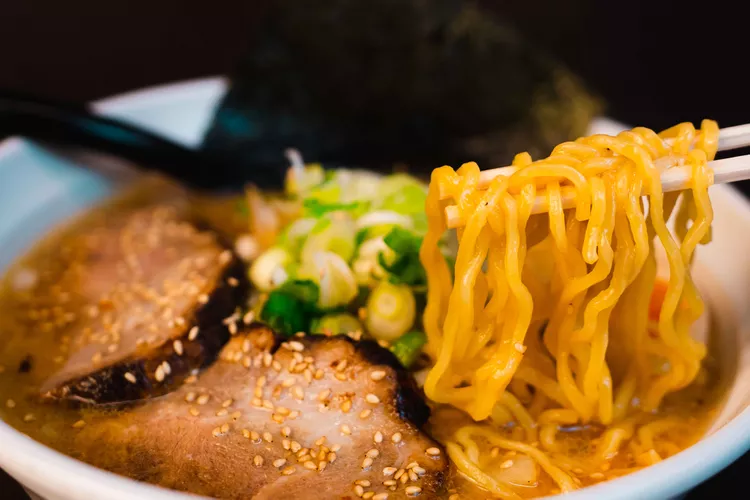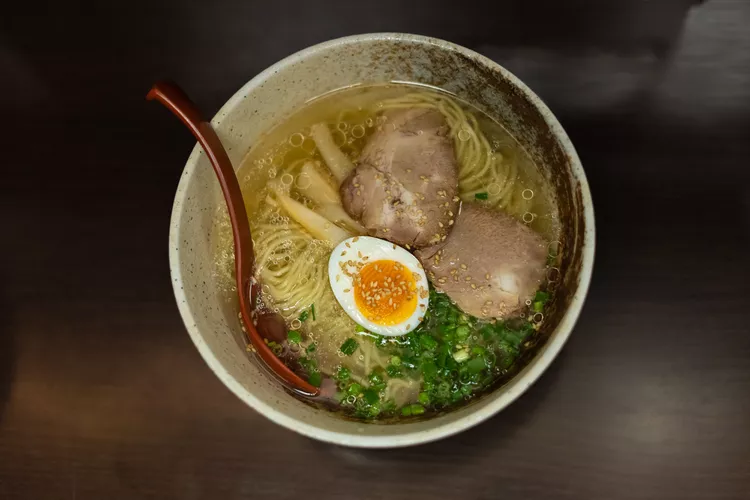I hear music before I smell food. AC/DC jam session. Then, as I looked down into the small restaurant, I smelled something much heavier: a perfect, sizzling umami. A few diners gathered around a wooden counter, their rapt expressions mimicking the song “Thunderstruck.”
Sapporo City is Japan’s northernmost metropolis, and it is known for its seafood, skiing, and international snow festivals. But for foodies, it’s best known for something: Ganso Ramen Yokocho. Also known as “Ramen Alley,” this unremarkable artery deep in the neon heart of Sapporo gave the world miso ramen and continues to deliver delicious perfection today.
For true believers, Japanese ramen shops are sacred ground, which is the ultimate comfort food. In Sapporo’s nightlife district of Susukino, home to the lively izakaya and karaoke parlor, this brightly lit alley is home to no fewer than 17 adjacent ramen restaurants, each offering its unique style to this ultimate comfort food.

At the northern end of the alley, my first stop is Haruka, known as the “Rock Ramen shop” because of its thumping music and brightly colored electric guitars that line its tiny walls. It is one of the smaller restaurants in the alley, seating eight diners, but serving ramen is the richest and most textured.
“The search for the perfect ramen is my eternal theme,” said Yuya Sasaki, Haruka’s head chef, handing me a bowl of piping hot buttery sweet noodles topped with melted cheese. “It’s crazy that Miso ramen originated here and is now eaten worldwide, but I always say that good ramen is like good music and can be played anywhere.”
The exact origin of miso ramen is disputed. Some said it was because a sleepy cook had confused his pot, and others said it was because a drunk customer had asked for noodles in his miso soup. But everyone agrees that after World War II, it all began here, in the capital of Hokkaido. Hokkaido is Japan’s vast northern island of snow-capped peaks and bubbling hot springs. By the time the 1972 Winter Olympics came to Sapporo, the city had consolidated a rag-crew of street vendors into a permanent venue known as Ramen Alley.

It may seem like nothing more than a thick noodle soup to the uninitiated, but a well-made ramen should be a complex and layered dish. Across the alley from Haruka, Tetsuya Tanaka, the turbaned chef at Icura (which means “lucky warehouse”), told me that the secret was the balance of ingredients.
“Every bowl of ramen is different, like a wave,” said Tanaka, who has been a chef at Ramen Lane for 13 years. “We can’t expect to eat the same bowl twice, but we can mix stir-fried vegetables, broth, miso, noodles, and toppings correctly.” The soup base is significant. It ties everything together.”
Like Sasaki, who loves heavy metal, Tanaka takes his craft seriously – almost religiously. It’s the same story up and down Ramen Alley, where a lone chef presides over every restaurant like a warrior monk. Customers jostle around the crowded streets, look through Windows for empty seats, and slip in for a bowl of warm food, usually costing about $7.

Across from Ichikura, I was lucky enough to snag a seat at Ramen Lane’s most famous restaurant, Tokuichi Tomiya (which means “special luck”). Handed down from father to son, it’s been here for 50 years, amassing a glittering array of awards, including multiple national ramen championships of the year. It seats 20, is the alley’s largest restaurant, and its walls are covered with portraits of celebrities, from professional sumo wrestlers and baseball players to the Glenn Miller Band.
The outgoing chef, Yomichiro Kosaka, followed the Hokkaido tradition by bringing me a steaming bowl of fragrant ramen topped with a tablespoon of corn and a dolk of butter and then showing me how to eat it properly.
“You have to suck like this,” he said, sucking ramen noodles in a voice somewhere between a coffee maker and a vacuum cleaner. “You’re trying to get the most flavor out of the noodle while cooling it down and showing your gratitude to the chef.”

The chef is surprisingly open about the secret ingredient behind his family’s success – mackerel lard – but he, like everyone else, considers himself as much an artist and creator as a chef. “I’ve spent my whole life trying to make perfect ramen,” he said, chuckling at my pathetic attempt to suck the yellow crinkle out of the bowl. “It’s a spiritual quest. Everyone in this alley is trying to reach the same point: Climb the mountain of perfection.”
Kosaka said that as the years passed, more and more foreign tourists came to his beloved alley and sat down at the counter of his home. “I was amazed at how the alley and its ramen became so famous,” he said. “We’ve had people come today from Indonesia, Argentina, Brazil, Italy and France. I hope the warm food and warm welcome speak for themselves.”
In many ways, this “warmth” is close to the sublimation of Sapporo’s purest soul: a friendly northern city with a relaxed, easygoing attitude far removed from the hustle and bustle of Tokyo. The perfect place is where the ideal soul food is born.
